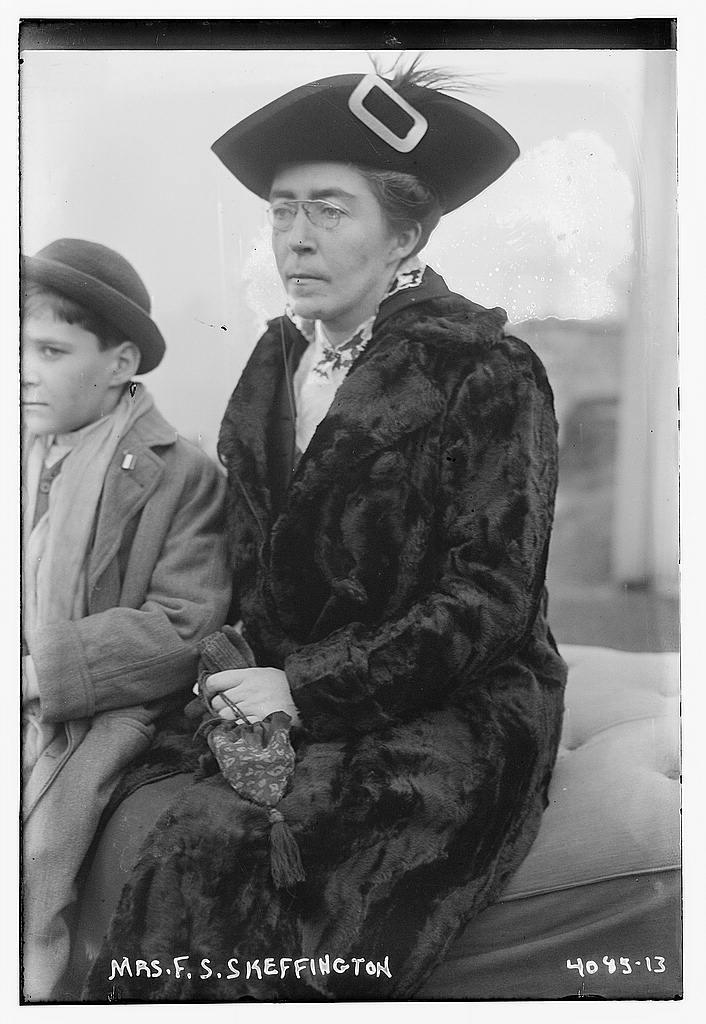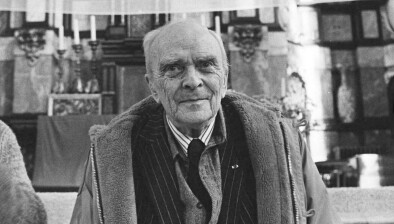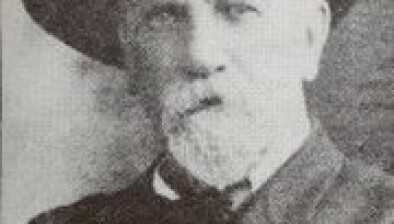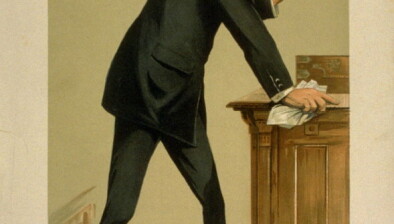Irish Legal Heritage: Irish Women’s Franchise League and the Irish Citizen

Hanna Sheehy Skeffington
In November 1908, Hanna Sheehy Skeffington and Margaret Cousins, along with their husbands Francis and James, founded the Irish Women’s Franchise League (IWFL). The primary aim of the IWFL was for women to be afforded the right to vote on the same terms as men, and a particular aim was to guarantee this was included in the Irish Home Rule Bill. Reflecting the aims of the non-party society, their slogans were “Suffrage First – Before All Else” and “Home Rule for Irishwomen as well as Irishmen” (Ward, 1982).
The British Prime Minister in 1908, H. H. Asquith, was vociferously opposed to women’s suffrage. When the Liberal party lost their parliamentary majority after the elections in 1910, Asquith was reliant on support from the leader of the Irish Parliamentary Party, John Redmond, and the MPs under his control. In return for Irish votes to prop up the Liberal government, home rule was set as a priority – however Redmond was also opposed to votes for women, so the IWFL faced an uphill battle.
Chronicling the activities of the IWFL, the Irish Citizen launched as a weekly feminist newsletter in May 1912 with the motto: “For men and women equally the rights of citizenship; from men and women equally the duties of citizenship”. A hugely popular newsletter, the Irish Citizen attracted contributions from all over the world and was a hub of lively debate between numerous suffrage societies, “nationalist and unionist, militant and non-militant” (The Irish Citizen, June 1912).
Although not as militant as the Women’s Social and Political Union in Britain, the IWFL acknowledged the legitimacy of violence in some circumstances, and famously, in June 1912, eight members of the IWFL, including Hanna Sheehy Skeffington, were arrested and sentenced to six months imprisonment for smashing the windows of government buildings in Dublin. Much of the Irish press described the incident as having dragged the name of Irish suffragists and “the whole Irish public in the dust” (Cullen Owens, 1984), but the Irish Citizen provided a voice for the women and their supporters. True to form, the Irish Citizen defended this (largely symbolic) militant action and called out the hypocrisy of nationalists and unionists “condemning the smashing of a few panes of glass as if it were an unheard of and unpardonable outrage in the name of Irish reputation for sanity and sobriety in the conduct of their social and political affairs” when both factions had resorted to illegal methods and the use of violence in the conduct of their own campaigns (The Irish Citizen, June 1912).
During the Easter Rising, Francis Sheehy Skeffington, editor of the Irish Citizen, was trying to stop people from looting shops when he was arrested on his way back to the home he shared with Hanna and their son, Owen. Wrongly suspected as being a rebel, Francis was executed alongside two journalists on the orders of Captain John Bowen-Colthurst, who was eventually charged with murder and tried by court-martial. Captain Bowen-Colthurst was found “guilty but insane” of their murders and interned at Broadmoor psychiatric hospital. In July 1916, the Irish Citizen published a “Memorial Number” as a tribute to Francis – a famous feminist who campaigned tirelessly for women’s rights, and an outright pacifist whose last words were later reported to be that he “was opposed to militarism and in favour of passive resistance” (The Irish Citizen, September 1916).
After the General Election of 1918, in which Constance Markievicz famously became the first woman to be elected to the House of Commons, the Irish Citizen carried the story of the first time women voted with a description of the election having “passed quietly [in] Ireland”, with women destroying “once again many pleasant male illusions about them, the disappointing creatures”. Deriding the suggestion that chaos would ensue if women were allowed to vote, the front page read “Babies were washed and husbands fed on Election Day just as they are Washing Day or at spring cleaning…Women’s presence, as usual, raised the tone and purified the atmosphere… Babies were wheeled along to the booths and policemen looked after them while the mothers votes – sometimes even fathers condescended to the task…. We heard of a Major who voted for a candidate called Kelly because he “had known a lot of decent fellows of that name” – no such superficial reason seems to have swayed women voters, who usually knew their own minds, and knew exactly why and for what they had voted” (The Irish Citizen, January 1919).
After the limited victory of partial enfranchisement, the Irish Citizen continued to advance the IWFL’s campaign for equal rights, despite financial difficulty and depleted membership. By September 1920, the Irish Citizen was a quarterly newsletter, and in what would be its final circulation, Hanna wrote a column appealing for increased support from its readers “so that when time and conditions permit we may return to our former strength”. Lamenting that the national struggle overshadowed all else, Hanna wrote “we still believe that we have a mission and a message for Irishwomen as a purely feminist paper, and emboldened in that belief we shall carry on” (The Irish Citizen, Sept-Dec 1920).
Unfortunately, the next issue of the Irish Citizen was not to be – in October 1920, Hanna’s home was raided by the Black and Tans and the presses were smashed – forcing the premature closure of an iconic feminist outlet and undeniable influence in achieving women’s suffrage in Ireland.
Seosamh Gráinséir








